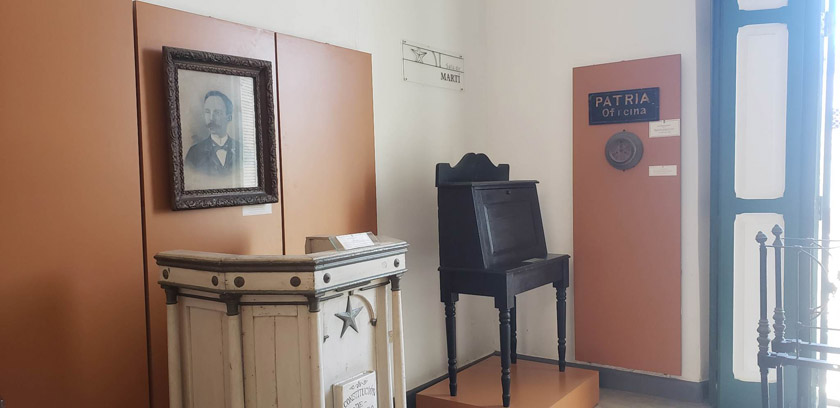
Once again I walk through the fine corridors of the Oscar María de Rojas Museum, a very popular place with the residents of the city of Cárdenas in the province of Matanzas, except this time I skip the beautiful collections of butterflies and the huge carriage of the colonial era that I liked so much as a child. Instead, I go to a room that I seldom visited, perhaps because I was too young to understand its exhibits or for the absence of the bright colors that abound in other galleries.
The José Martí Hall opens before me then as a space still unexplored. It is not very large, but it keeps several valuable pieces of furniture, three of which arouse my interest as I read the small tags with their description.
In 1906, the desk where Martí wrote the first pages of Patria, the newspaper that he saw as one more soldier and helped him spread his ideas about the new war, arrived at the museum. It is not only the furniture: hanging on the wall next to it is the sign that once identified the spot where the first copies were prepared.
Custom-made by Cuban émigrés for El Maestro—taking into account his height and weight—to give his speeches in exile, the white lectern is also striking. It is adorned with pillars, a star, and the figure of a book bearing on its cover the words "Constitution of Guáimaro, April 10, 1869".
Nearby is the small unpretentious table that Martí used to write and sign the fundamentals of the Cuban Revolutionary Party. There is no need to mention the value of those fine boards that witnessed the birth of such a relevant document.
Apparently, all these pieces belonged to the club San Carlos, an important association of émigrés based in Key West, Florida who donated them to the museum at the instance of personalities such as Brigadier General Domingo Mendez Capote, according to a museum specialist, who holds that their contribution not only endowed the room with some of the museum’s most valuable exhibits, but also with one of the largest collections of historical objects related to José Martí.
On January 28, Cuba will commemorate the 170th anniversary of the birth of the Apostle of Cuba's independence. Surely there will be no lack of white roses or poems in the voice of children, but it will also be a good day to visit the Oscar María de Rojas Museum and rediscover Martí in a different light: in the historical memories of a desk, a lectern and a small table where he placed his honest hands.
Sidebar

 Agencia Cubana de Noticias
Líder en información nacional
Agencia Cubana de Noticias
Líder en información nacional








Nos reservamos el derecho de no publicar los comentario que incumplan con las normas de este sitio